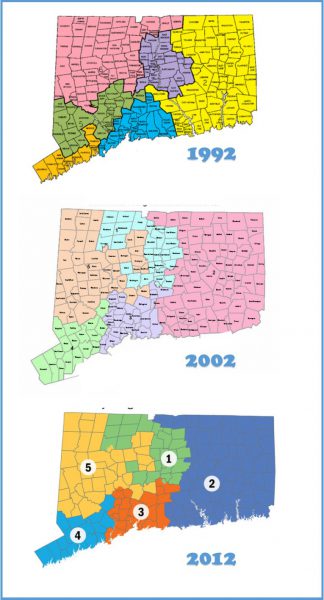Gerrymandering Lessens Compactness, Which Lessens Voting, UConn Study Finds
/The less geographically compact a district is, the lower the voter turnout. That’s the bottom-line finding of a study by a University of Connecticut political scientist, published in the June issue of Election Law Journal. The study suggests that gerrymandering – often criticized for skewing political representation to one party or the other – has additional ill-effects, including the act of voting itself.
 Using a dataset on the compactness of U.S. House districts—with multiple measures generated by geographic information system (GIS) analyses over two redistricting cycles, UConn Associate Professor Jeffrey Ladewig estimated the effects of congressional district compactness on electoral turnout. The conclusion: compactness matters. The study “Appearances Do Matter”: Congressional District Compactness and Electoral Turnout” was led by Ladewig.
Using a dataset on the compactness of U.S. House districts—with multiple measures generated by geographic information system (GIS) analyses over two redistricting cycles, UConn Associate Professor Jeffrey Ladewig estimated the effects of congressional district compactness on electoral turnout. The conclusion: compactness matters. The study “Appearances Do Matter”: Congressional District Compactness and Electoral Turnout” was led by Ladewig.
“Districts that were less geographically compact had lower voter turnout – measured both from election data and individual survey data – even controlling for district demographic and election characteristics,” the Boston Globe reported in a brief news item about the study.
States determine their district lines for Congressional seats and state legislative seats every ten years, following the U.S. Census. The next Census will be in 2020, with district lines slated to be redrawn for the 2022 elections.
According to Governing magazine, states around the country have a range of criteria in drawing district lines, including:
- Compactness: Having the minimum distance between all the parts of a constituency (a circle, square or a hexagon is the most compact district).
- Contiguity: All parts of a district being connected at some point with the rest of the district.
- Preservation of counties and other political subdivisions: This refers to not crossing county, city, or town, boundaries when drawing districts.
- Preservation of communities of interest: Geographical areas, such as neighborhoods of a city or regions of a state, where the residents have common political interests that do not necessarily coincide with the boundaries of a political subdivision, such as a city or county.
- Preservation of cores of prior districts: This refers to maintaining districts as previously drawn, to the extent possible. This leads to continuity of representation.
- Avoiding pairing incumbents: This refers to avoiding districts that would create contests between incumbents.
Connecticut has no guidelines or limitations in drawing Congressional District lines. (Although it does have a process.)
Jeffrey W Ladewig earned his Ph.D. from the Department of Government at University of Texas at Austin in 2002 and his B.A. from the Department of Political Science and the Department of Economics from the University of Wisconsin at Madison in 1993. He teaches courses on the U.S. Congress, the U.S. President, American political economy, and American political parties.






























